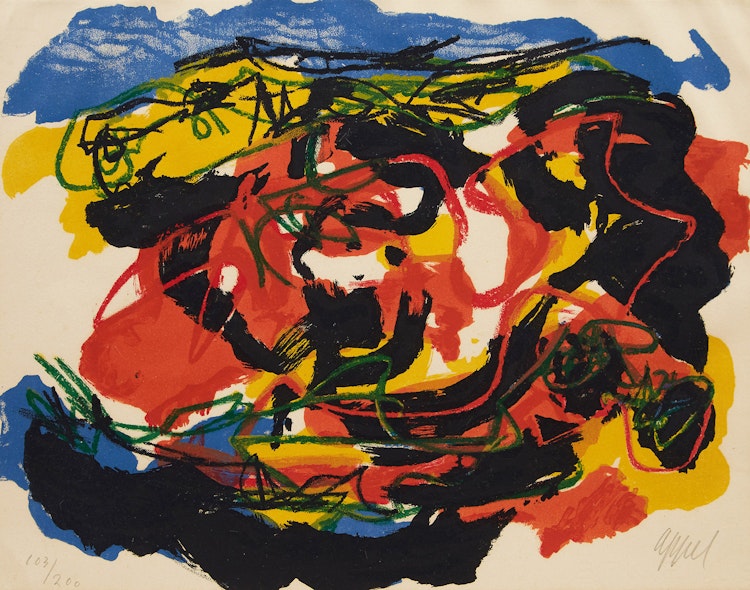Untitled, 1959 by Karel Appel

Karel Appel
Untitled, 1959
colour lithograph
signed lower right; numbered 103/200 lower left
15 x 19 ins ( 38.1 x 48.3 cms ) ( sight )
Auction Estimate: $500.00 - $700.00
Price Realized $480.00
Sale date: February 28th 2023
Private Collection, Montreal
Share this item with your friends
Karel Appel
(1921 - 2006)
Born on April 25, 1921, in Amsterdam, Karel Appel studied at the Rijksakademie van Beeldende Kunsten and, in 1946, held his first solo show at Het Beerenhuis, Groningen, and participated in Jonge Schilders (Young painters) at the Stedelijk Museum.
Appel drew primarily inspiration from the artists Pablo Picasso, Henri Matisse and Jean Dubuffet. In 1948, he was a member of the Nederlandse Experimentele Groep (Dutch Experimental Group) before establishing the avant-garde movement CoBrA, with Constant Nieuwenhuys, Corneille (Guillaume Cornelis Beverloo), and other painters from Copenhagen, Brussels and Amsterdam. Their unique style challenged abstraction and Surrealism, featuring bold, expressive compositions inspired by children’s doodles and folk art.
Following the group’s disbanding in 1951, Appel travelled extensively and pursued his career between Paris and New York. In 1954, he held his first gallery exhibition in the United States, and the following year, one of his paintings was included in the seminal group exhibition The New Decade at New York’s Museum of Modern Art, displaying his work alongside those by Francis Bacon, Pierre Soulages and Jean Dubuffet. Over time, his practice expanded to include sculpture, screen printing, stained glass and poetry, which continued until his death in Zürich on May 3, 2006.
Today, Appel’s works can be found in various major museums, including the Rijksmuseum in Amsterdam, the Aboa Vetus & Ars Nova in Turku, Finland, and The Phillips Collection in Washington, D.C.

